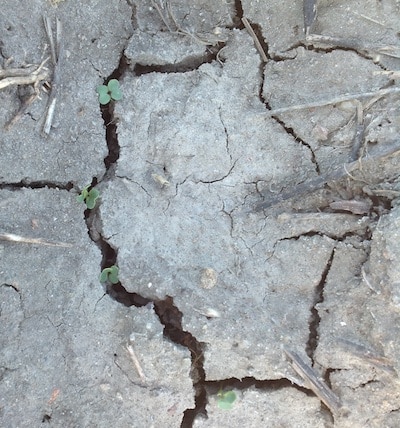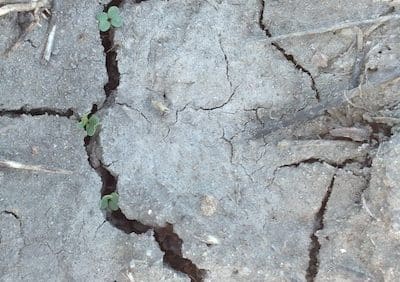
Growers in southern Saskatchewan and western Manitoba who tilled unseeded acres last year are seeing more crusting this year. Residue can help reduce crusting in crust-prone soils, and but with uncropped acres and tillage last year some fields have reduced residue levels. With good rainfall a week or two ago, many canola fields are seeing reduced emergence due to crusting.
No research has been conducted to show the best ways to break up crusting and free the crop. If a few plants have emerged, it may be best to leave them be. One to 2 plants per square foot are better than none.
There are no reliable solutions other than to wait for rain. Some growers have reseeded the worst sections of fields. A light harrowing might help if nothing has come through. Do a couple passes then assess whether canola seedlings are being ripped out of the ground. Harrowing too close to emergence can be harmful to a shallow seeded crop such as canola and may not be worth the risk.
Using a roller may be worse than harrowing when soils are wet below the crust. Instead of cracking up the soil surface, a roller could turn the whole topsoil zone to concrete. Again, there is very little research on how to manage crusting. It’s trial and error.
